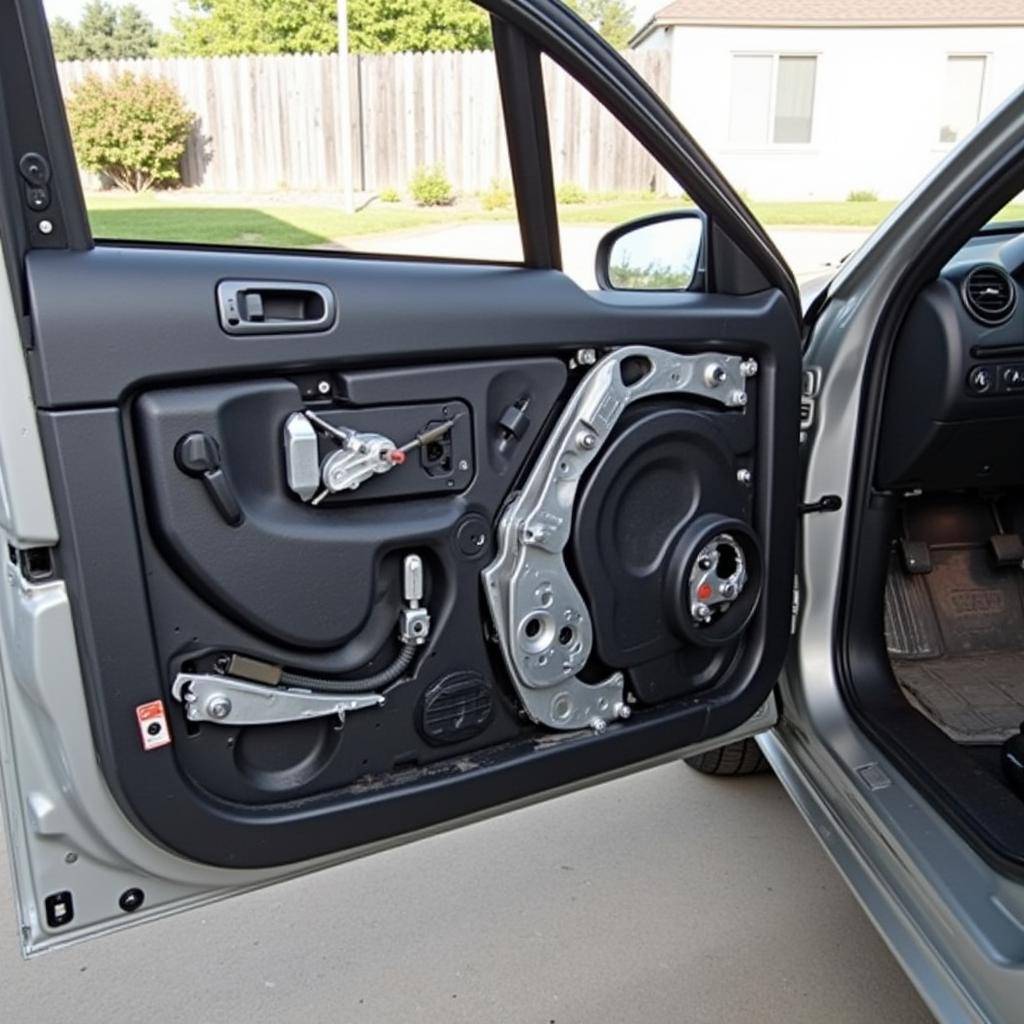A sticky car window can be a real nuisance, making it difficult to roll up or down smoothly. This article provides a comprehensive guide on how to diagnose and fix this common car problem, covering everything from simple DIY solutions to more complex repairs.
Why is My Car Window Sticky?
Several factors can cause sticky car windows. The most common culprits include worn-out weatherstripping, dried-out lubricant, or a malfunctioning window regulator. Sometimes, debris like dirt, leaves, or even small twigs can obstruct the window’s movement. Let’s delve into each potential cause and explore effective solutions.
Common Causes of Sticky Car Windows and How to Fix Them
Worn-out Weatherstripping
Over time, the rubber weatherstripping around your car window can deteriorate, become brittle, and stick to the glass. This can hinder the window’s smooth operation. Replacing the weatherstripping is usually a straightforward fix.
- Solution: Purchase replacement weatherstripping specifically designed for your car model. Carefully remove the old weatherstripping and install the new one, ensuring a snug fit. Lubricate the new weatherstripping with silicone spray to prevent future sticking.
Dried-out Lubricant
The tracks and mechanisms within the car door that facilitate window movement require lubrication. If this lubricant dries out, it can create friction, making the window sticky.
- Solution: Apply a silicone-based lubricant specifically designed for automotive use to the window tracks. Avoid using WD-40 or other oil-based lubricants, as these can attract dirt and dust, exacerbating the problem. Work the lubricant into the tracks by repeatedly rolling the window up and down.
Malfunctioning Window Regulator
The window regulator is the mechanism responsible for raising and lowering the window. If it’s damaged or worn out, it can cause the window to stick or move erratically.
- Solution: Diagnosing a faulty window regulator often requires removing the door panel. If you’re not comfortable with this, it’s best to consult a qualified mechanic. A professional can assess the regulator and replace it if necessary.
 Malfunctioning window regulator in a car door
Malfunctioning window regulator in a car door
Debris Obstruction
Sometimes, small objects like leaves, twigs, or dirt can get lodged in the window tracks, obstructing the window’s movement.
- Solution: Carefully inspect the window tracks for any visible debris. Use a vacuum cleaner with a crevice attachment to remove any loose particles. A small brush can also be helpful for dislodging stubborn debris.
Sticky Car Window Fix: A Step-by-Step Guide
- Identify the Problem: Determine the likely cause of the sticky window by observing its behavior. Does it stick only in certain positions? Does it make any unusual noises?
- Gather Your Supplies: Depending on the cause, you may need replacement weatherstripping, silicone lubricant, tools to remove the door panel, or simply a vacuum cleaner and brush.
- Implement the Solution: Follow the specific instructions outlined above for each potential cause.
- Test the Window: After applying the fix, repeatedly roll the window up and down to ensure it moves smoothly.
Preventing Sticky Car Windows
Regular maintenance can prevent sticky windows. Lubricate the window tracks every few months with a silicone-based lubricant. Keep the window tracks clean by regularly removing any debris.
Conclusion: Keeping Your Car Windows Rolling Smoothly
Addressing a sticky car window promptly can prevent further damage and ensure your windows operate smoothly. By understanding the common causes and solutions outlined in this guide, you can tackle this issue effectively. Remember, regular maintenance is key to preventing future problems. For persistent issues, don’t hesitate to contact a qualified auto technician. We’re here to help! Reach out to AutoTipPro at +1 (641) 206-8880 or visit our office at 500 N St Mary’s St, San Antonio, TX 78205, United States.
“Regularly lubricating your car window tracks is like giving your windows a sip of water – it keeps them happy and moving freely,” says John Miller, Senior Automotive Technician at Miller’s Auto Repair.
“A sticky car window might seem like a small problem, but it can be a symptom of a larger issue if left unaddressed,” adds Sarah Johnson, Lead Mechanic at Johnson’s Automotive Solutions.
FAQ
- Can I use WD-40 to lubricate my car windows? No, WD-40 is not recommended for car window lubrication. It can attract dirt and dust, making the problem worse.
- How often should I lubricate my car window tracks? Lubricating your car window tracks every few months is generally sufficient.
- How much does it cost to replace a window regulator? The cost to replace a window regulator varies depending on the car model and labor rates.
- What is the best type of lubricant to use on car windows? A silicone-based lubricant specifically designed for automotive use is the best option.
- Can I replace the weatherstripping myself? Yes, replacing weatherstripping is often a straightforward DIY project.
- What should I do if my car window is still sticky after trying these solutions? If the problem persists, it’s best to consult a qualified mechanic.
- How can I prevent debris from getting into my window tracks? Regularly cleaning the window tracks and keeping the car clean can help prevent debris buildup.






Leave a Reply